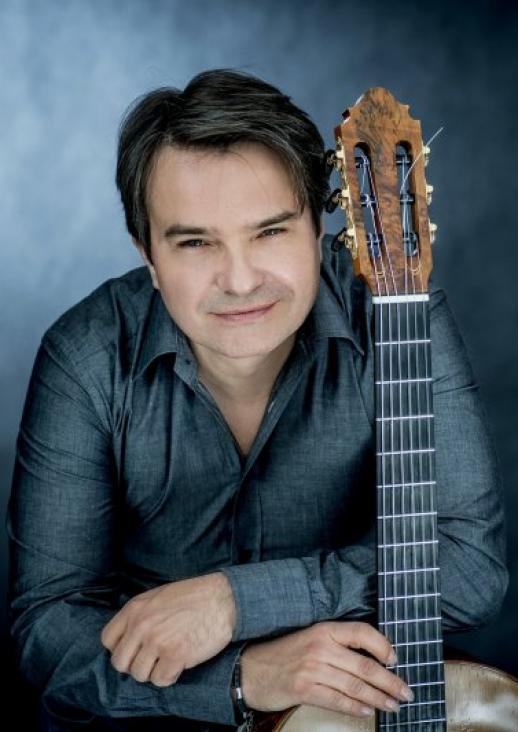Dancing guitar and heroic Beethoven
The event will take place as part of the Viva Beethoven! - the 250th anniversary of the composer's birth project.
Artists:
- Krzysztof Pełech – guitar
- Toruń Symphony Orchestra
- Dainius Pavilionis – conductor
Programme
- M. Cynk - Sinfonietta na smyczki
- R. Harvey - Concerto Antico na gitarę i orkiestrę
- L. van Beethoven - III Symfonia Es – dur Eroica op. 55
String symphonette was created in the summer of 2013. It is a one-movement piece. It has the form of a mosaic and consists of a series of images, moods, ideas, one of which grows out of the other, where one is a solution or a culmination for the other. Sometimes they are juxtaposed in terms of contrast in expression, movement and emotion. Internally, the work is divided into two movements. The first one, after a quiet introduction, is rhythmic, full of movement, there are imitations and dialogues between the instruments. In the second one there is more peace, melancholy, but at the end the texture becomes denser and faster. There are several leitmotifs in the piece that should be recognizable to the listener. There is also a fragment referring to the rondo in form, fulfilling the role of a chorus, which each time brings a new mood, new sonic qualities, something different. An important element in the composition is rhythm and tonal expression.
The guitar mentioned in the title is Concerto Antico for the guitar and orchestra, the piece by Richard Harvey, created for his friend - guitarist John Williams. This contemporary composition (created in 1995) consists of five movements. The sounds of the concert are based on old dances and songs from different parts of Europe.
Heroic Beethoven by contrast refers to Symphony No. 3 in E flat major Eroica op. 55. This piece was written with the intention of dedicating it to Napoleon Bonaparte. Beethoven, however, found out about his coronation as emperor and, embittered by this move, erased the title. The piece was given a subtitle A heroic symphony, written in memory of the great Man. This piece is considered to end the musical era of classicism and start romanticism.
Krzysztof Pełech - classical guitarist, lecturer at the Academy of Music in Bydgoszcz (until 2000 he was a lecturer at the Academy of Music in Wrocław). Guitar and Bass magazine called him the best Polish classical guitarist three times. He is the creator of the Wrocław Guitar Festival Gitara + and the co-founder of the Wrocław Guitar Society.
Concert program summary
A composer from Toruń, Magdalena Cynk (1968) wrote String symphonette in the summer of 2013 for the Capella Bydgostiensis Chamber Orchestra. Symphonette has a one-movement structure, but, as Magdalena Cynk says, it is a kind of "mosaic consisting of a series of images, moods, ideas, one of which grows out of the other, where one is a solution or culmination for the other." This maze of musical themes and motifs is dominated by the principle of sonic and expressive contrasts. The dramatic climaxes are intertwined with moments of relaxation, and the rhythm corresponds with lyricism.
Richard Harvey (1953) English musician and composer wrote Concerto antico (1995) for guitar and orchestra for John Williams, his Australian friend, a classical guitar virtuoso and the London Philharmonic. The piece is formally closer to a dance suite than to a concert. It consists of five movements, based on old dances and songs from different parts of Europe.
Ludwig van Beethoven (1770-1827) is a symphonic visionary, creator of a program and vocal-instrumental symphony. Symphony No. 3 in E flat major, op. 55 "Eroica" is a breakthrough in the tradition of classical symphonies. The piece represents not only a new type of instrumentation, orchestration and sound colouring, but is also full of extra-musical content. It is no longer a symphony, but a drama in four parts, which, due to its size and formal surprises, must have shocked the audience of that time.
Eroica started in Heiligenstadt in 1802 was completed in Vienna in 1804. The first performance at the An der Wien Theater ended in a great failure. Critics in unison shouted that the symphony was: "Too long, overloaded, incomprehensible and too noisy." Fortunately, history has shown how wrong they were.
Aneta Derkowska, PhD





















